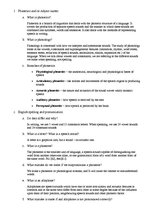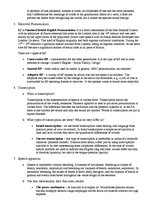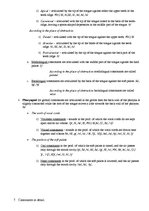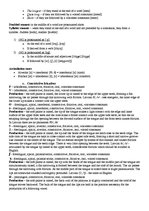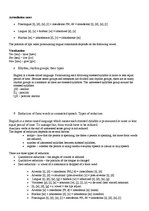1. Reduction of form words in connected speech. Types of reduction.
English is a stress-timed language which means each stressed syllable is pronounced at more or less equal period of time. To manage this, form words have to be reduced.
Auxiliary verbs at the end of unstressed sense group is not reduced.
The degree of reduction depends on several factors:
• tempo – how fast the person is speaking, the faster a person is speaking, the more form words are reduced;
• number of unstressed syllables between stressed syllables;
• register – whether the person is using careful everyday speech or casual or lazy speech.
There are three types of reduction:
• Quantitative reduction – the length of vowels is reduced
• Qualitative reduction – the position of the tongue is changed
• Zero reduction – a vowel of a consonant is dropped of a form word
• Alveolar [t], [d] + interdental [Ѳ],[ ð] = (inter)dental [t], [d]
• Alveolar [t], [d] + cacuminal (post-alveolar) [r] = post-alveolar [t], [d]
• Lingual [t], [d], [k], [g] + bilabial [w] = labiolized [t], [d], [k], [g]
• Voiceless [p], [t], [k] + sonorant [w], [j], [l], [r] = a deviced (less voiced) sonorant
• [t], [k], [d], [g] + a vowel = the lips adjust
• Alveolar [n] + interdental [Ѳ, ð] = interdental [n] (ninth)
• Bilabial [m] + labiodental [f], [v] = labiodental [m] (comfort)
• Forelingual [t], [d], [n], [l] + interdental /Ѳ/, /ð/ = interdental [t], [d], [n], [l]
• Lingual [s], [z] + bilabial [w] = labiolized [s], [z]
…
